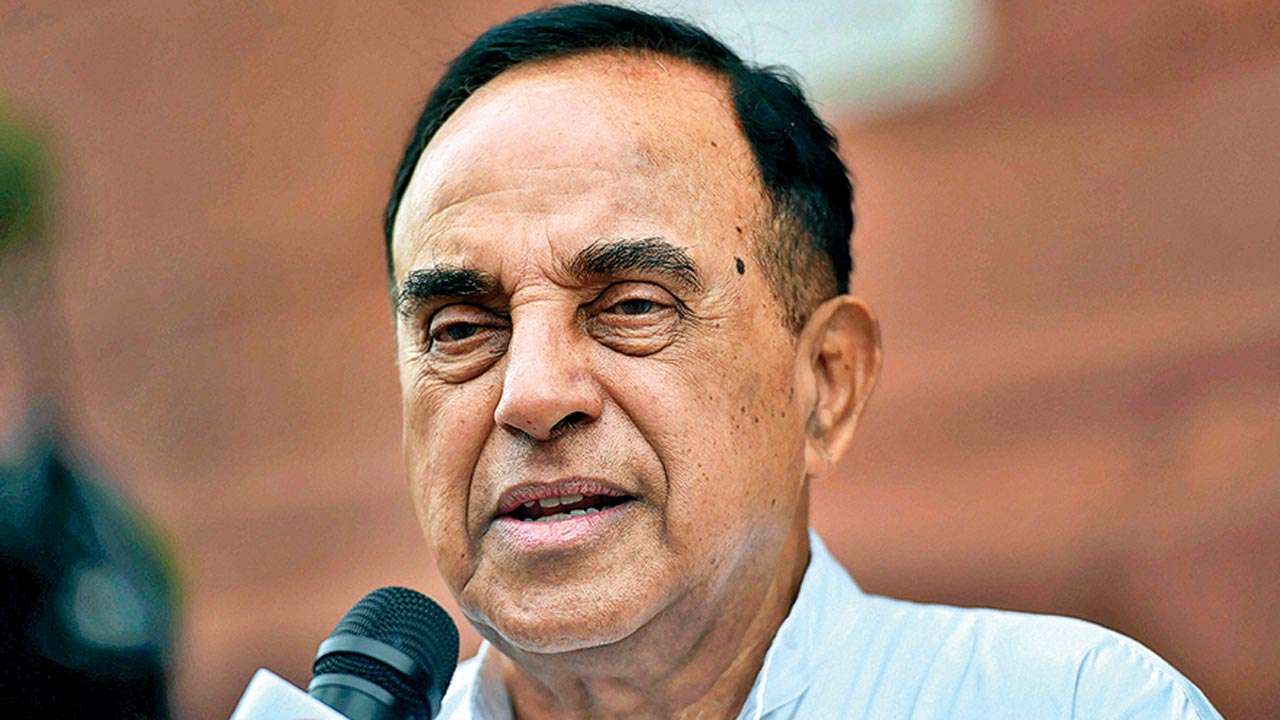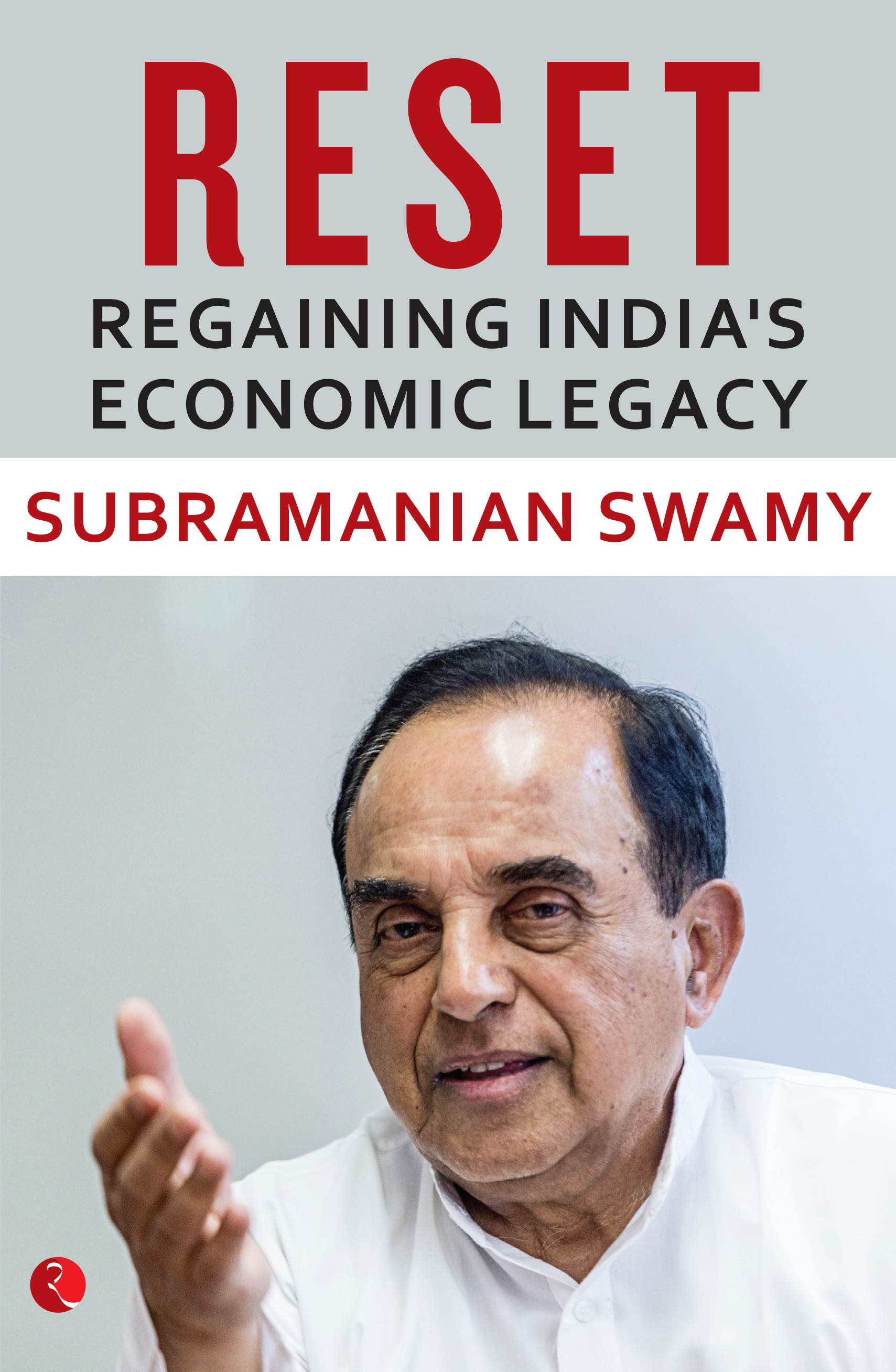Is the Economy Spinning out of Control? – Reset

In 1970, at the request of a few Jan Sangh leaders including Nanaji Deshmukh and Jagannathrao Joshi, Subramanian Swamy prepared and presented a Swadeshi Plan. The monograph vociferously demanded that socialism be sacrificed for a competitive market economic system, so India can grow at 10 per cent per year, achieve self-reliance, full employment and produce nuclear weaponry. The then Prime Minister Indira Gandhi denounced the plan as dangerous.
Fifty years later, Swamy redefines his path-breaking ideas on India-specific economic development in his seminal work, Reset. It undertakes a nuanced analysis of the manner in which the highly prosperous Indian economy witnessed a long, accelerated decline due to persistent British imperialist aggression, and compares the distinctive manner in which Asian giants—India and China—suffered at the hands of imperialism.
Here’s an excerpt from the book, in which Dr Swamy shares his take on the Indian economy’s decline in the last few years:
We do have preliminary data for 2019–20 to state that the decline in GDP growth will continue into this financial year, dropping even lower than 5.8 per cent annual equivalent Q1 growth rate. The Mint Macro Tracker that provides a monthly state-of-the economy report based on trends across sixteen high-frequency economic indicators, signals deterioration in the macroeconomy in April 2019 owing to a sharp slowdown in growth rates of several sectors of the economy, and a widening of the trade deficit and rising CAD. Of these sixteen macroeconomic indicators, only five were in the green (above the five-year average trend) in April 2019, while seven were in the red (below the five-year average trend).
This is a significant deterioration in the growth rate of the economy compared to a year ago, and suggests that the newly re-elected Modi government in 2019 will need to shape up its economic agenda and focus on measures to prevent this current tailspin from leading to a crash. Moreover, to move to a path of rapid growth, the government has to recognize that growth in GDP terms has three components: (i) growth rate in capital deployed, (ii) labour force employment and (iii) technological improvement due to induction of innovations and the quality of skills of the labour force employed, which raises productivity of inputs, and helps to jump to a higher growth path (instead of along a current path curve, subject to the law of diminishing returns, that is, less and less return in terms of increased output for more and more inputs of capital and labour).
In a recent article, Dr Rathin Roy, director of the government-run National Institute of Public Finance and Policy (NIPFP) and member of the Economic Advisory Council to the Prime Minister, argued that ‘the Centre’s fiscal space was severely constrained. It is for this reason, perhaps, that the FM’s Budget speech avoids any mention of the macro-fiscal situation. This is understandable: It has not been the tradition in India to confront such difficulties openly.’
He further states that ‘the total expenditure as per cent of GDP continues to shrink from 13.34 per cent in 2014–15 to 13.2 per cent in 2019–20. Reading Table 1, Chapter 2, Vol II, of the Economic Survey, we find that the provisional accounts for 2018–19, as reported by the Controller General of Accounts (CGA), has presented data that is very different from those in the revised estimates (2018–19). According to the CGA data, the revenue-GDP ratio is 8.2 per cent, a full percentage point lower than reported in the revised estimates.

In other words, for the 2019–20 Budget Estimate (BE) to be credible, revenue receipts would need to rise by a whopping 1.1 per cent of the GDP, where the Union Budget allows for just a 0.12 per cent increase! Such spin on finance by the Finance Ministry will land the nation squarely in a massive crisis and a huge credibility loss. But the Ministry as of now is clueless, while its economic advisors seem tongue-tied.
Moreover, the Budget speech of the new finance minister proposes important ‘simplifying’ reforms. Paragraph 103 of the 2019–20 Budget speech had proposed that the sovereign government of India borrow from foreigners to finance its expenditures. But grave concerns of many of us about this proposal on grounds of economic security and sovereignty, and about the macroeconomic consequences, with no details in the Budget, forced the prime minister to intervene and ‘sack’ the finance secretary by a transfer. But such firefighting is not enough.
Thus, without a doubt, the growth rate of the economy (during 2014–19), calculated on a proper index number-based GDP, has declined over the last four financial years. The annual rate for 2019–20 is, for obvious reasons, not available, but my guess is that the downward trend has not abated. According to the quarterly data for GDP from 1 January to 31 March 2019, the growth rate on annual equivalent has declined to 5.8 per cent, a new low for the last decade.
The reason why the GDCF in the economy has been slowing down is the structural fault. This is a serious tailspin factor that can lead to an economy spinning out of control. The slowdown is not just of two quarters, but in fact, since 2015—as predicted by me. The GDP growth has steadily declined from its peak of 8.2 per cent three years ago, as Graph 1 shows. It is expected that the growth of the economy will slow down further to an estimated 6 per cent in the year (2019–20), after averaging at 7 per cent for the five-year period 2014–15 to 2018–19. The second-last quarter figure was 6.7 per cent, and it declined further to 5.8 per cent during the first quarter of 2019–20. These trends include domestic demand tapering off on higher borrowing cost due to expected rising real interest rates.
If immediate action thus is not initiated by the new Modi dispensation, it would limit the pace of the economy’s growth over the next few years, with real GDP growth of much less than 7 per cent 2020–21 onwards, and all talk of India emerging as a developed country with near-full employment and poverty ratio below 15 per cent of the population will evaporate into thin air. India missed the Industrial Revolution in the nineteenth century, and then lost out in the race for globalization in the twentieth century due to the adoption of the command economy framework, and now is faced with the threat of missing the knowledge and innovation revolution of the twenty-first century too.
*********
Get the title here.

